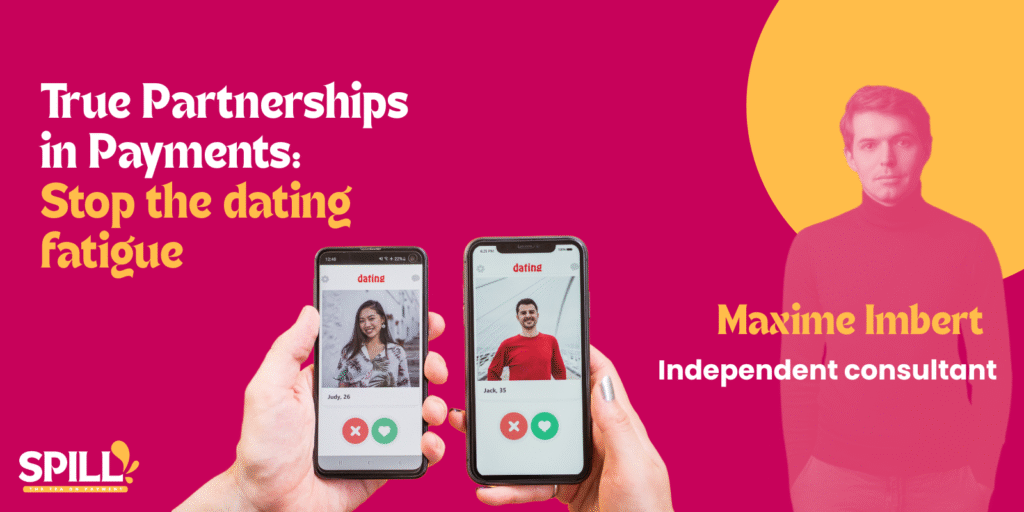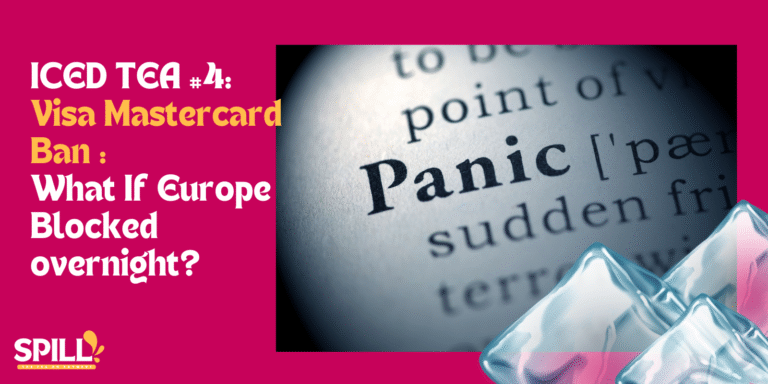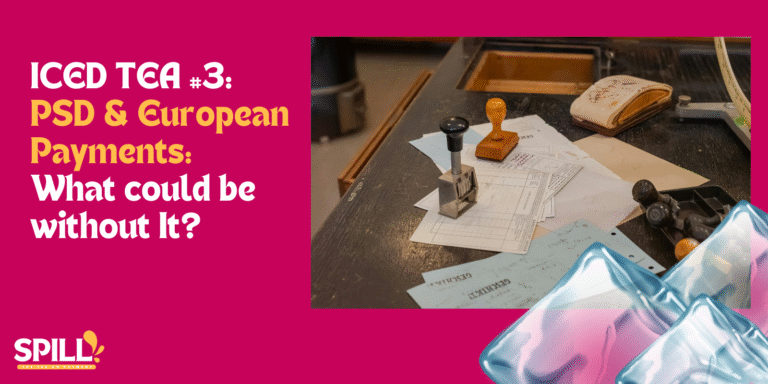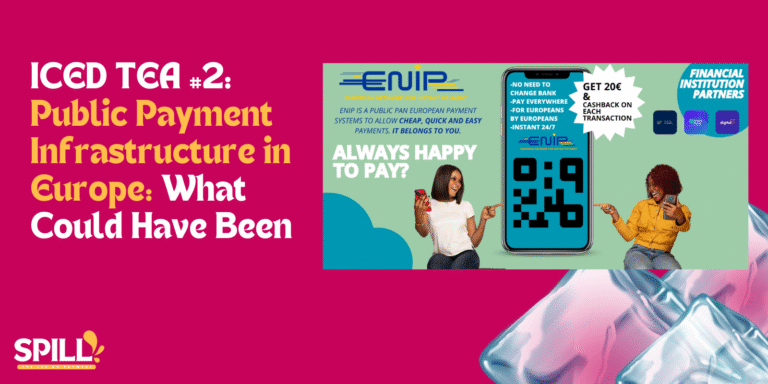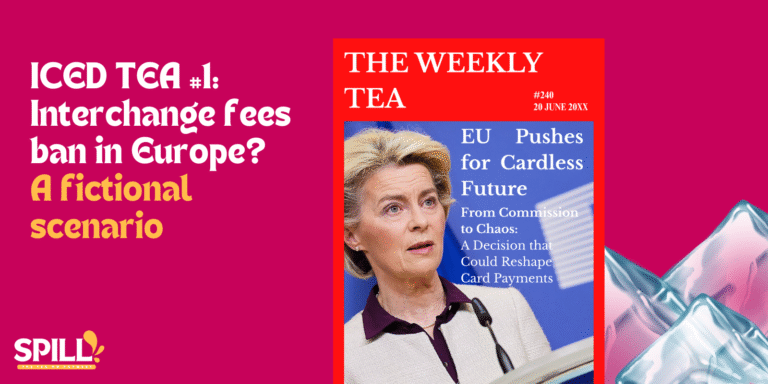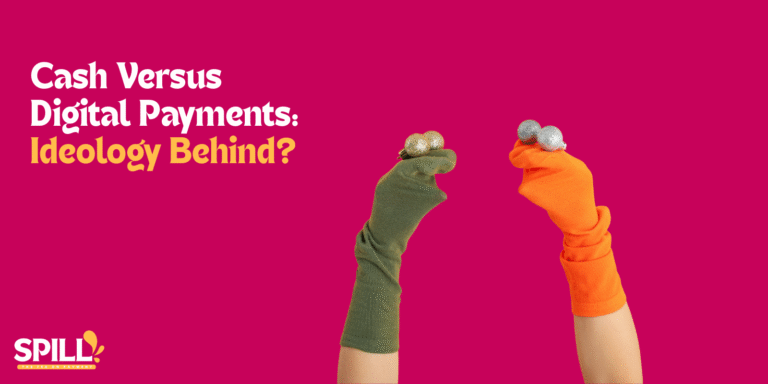Partnership is probably one of the most overused and misunderstood terms in the payments industry. Like on dating apps, everyone seems to be partnered with someone. But swipe past the press releases and you’ll see: many of these relationships are nothing more than transactions in disguise. They do not represent true partnerships in Payments.
I’ve spent a considerable amount of time building partnerships in the payments industry. One thing I’ve particularly noticed too often is this: vanity over value, compliance dressed up as innovation, and deals signed without ever thinking of the merchant or the end customer. It’s time to raise our standards. Not every match is a good one, and not every deal warrants being called a partnership.
The delusion of true partnerships in payments
1. Technical integrations ≠ Strategic partnerships
To clarify: Plugging in a KYC solution to remain compliant with regulations is not a partnership. In other words, it’s an integration. There’s no shared ambition, no joint innovation, it’s just a legal obligation. Consequently, labelling such moves as strategic alliances is misleading and devalues the real thing.
I used to work at Lemonway, and the ACPR (French regulator) was very tough with PSP when it comes to Compliance. You have no other choice but to invest in your compliance strategy. For Lemonway, it was more than EUR 5M, so we partnered with Onfido not because we wanted to, but we were forced to by the regulator.
2. The vanity fair: ecosystem signaling over substance
We’ve all seen them, LinkedIn posts about exciting new partnerships that are little more than ecosystem theatre. No joint product, no commercial plan, no co-marketing, it’s just logo swapping. Of course, merchants and customers aren’t fooled. These empty announcements only feed cynicism and erode trust.
I’m also highlighting some partnerships in the Fintech world every week on LinkedIn and sometimes, they are not real partnerships
3. Partners or just providers?
Many channel partners are just vendors. You pay them so that they deliver a service, end of story. If there’s no shared roadmap, no GTM plan, and no customer impact, then it’s not a partnership. It’s procurement, product upgrade, call it whatever you want
The cost of fake love
Like a bad date with someone who just talks about themselves, superficial partnerships come at a cost:
- Confusion: Merchants don’t understand what’s really offered.
- Operational friction: fragmented systems and unclear responsibilities
- Eroded trust: Overpromising and underdelivering creates long-term damage.
Therefore, Merchants and end customers deserve better. They deserve partners who build with purpose and for them. To rephrase it, true partnerships in Payments are based on:
- Shared objectives: Clear alignment on success metrics
- Joint GTM: Coordinated efforts to bring a solution to market not only seeing the dollars as a result of the partnership
- Complementary strengths: Each party brings something unique,
- Mutual benefit: Commercial upside, innovation, market access, visibility.
These elements aren’t optional, they’re the foundation. If you’re not building on this, don’t call it a partnership.
Red flags to watch out for true Partnerships in Payments
Now that we have seen what is at stake with true Partnerships in Payments, let’s play the red flag game. What should alert you on partnerships:
- No skin in the game, only one party is invested,
- The announcement has more polish than the actual integration
- You couldn’t explain the merchant value in under 30 seconds.
Too many red flags? Swipe and leave fast.
Of course, high standards shouldn’t become unrealistic checklists. No partner will be perfect, but if there’s no intent to grow together, then it’s not the right one.
The orchestrator illusion: a case of toxic partnerships
One striking example: payment orchestrators and acquirers. Often branded as partners, they usually behave like utilities. True Partnerships in Payments don’t work in this way. Routing transactions or aggregating payment methods is valuable, but it’s not a partnership unless there’s co-innovation, tailored strategy, and joint execution. Without that, it’s a transactional, one-sided relationship. Think of it as the partner who never texts back.
It doesn’t mean orchestrators and PSP cannot build strong partnerships but it requires experience and a clear purpose.
To illustrate my words, what we have built with Purse (ex Upstream Pay), a payment orchestrator, at Lemonway to serve Decathlon was product integration and routing to make sure that we were able to serve the Merchant.
Then, if you build on a successful first case and deliver value to the Merchant through this integration, you’re then building a partnership.
Why real partnerships are no longer optional
In an increasingly fragmented and competitive ecosystem, payment companies can’t afford to go solo or fake it.
- The rise of embedded finance means distribution is shared.
- Regulation (PSD3, eIDAS2) demands trust, not just compliance.
- SaaS vendors expect co-pilots, not middlemen.
The ones who win will be those who co-create value, not just resell it.
And that’s exactly the case with Embedded Finance where we see the big players taking the lead to serve the industry. Adyen, Stripe, Mollie or Swan are not only partnering with Fintech or SaaS, they are selling their solution and empowering them.
The accountability test
Before you put out that partnership announcement, ask yourself:
- What problem are we solving together?
- How does this benefit the merchant or end user?
- Are we both bringing something unique to the table?
- Is there a joint GTM plan or just a tech handshake?
If the answer to any of those is vague, especially the first two, you should reconsider building how you buld true partnerships in Payments.
Conclusion: it’s not just about being together
Partnerships in payments aren’t just about matching logos or syncing APIs. They’re strategic. They need alignment across product, sales, marketing, CS and tech. Even within the same segment, what works for one might not work for another. Just because your competitor struck a deal doesn’t mean you should copy-paste, it’s a very toxic attitude
Your product, your integration capabilities, your GTM model, all of it must be considered. Otherwise, you risk projecting an image that’s not only misleading, but damaging. Like a couple who looks great on Instagram but fights off-camera.
It’s time to get serious about how we talk and act on partnerships. Not every integration deserves a press release. And not every collaboration deserves your time.
Let’s build less noise, and more value.
About Maxime :
Maxime Imbert has had a whole career in Sales & Partnerships, first in the travel and airline industry, then in the Payments industry. In his last role at Lemonway, he built a whole ecosystem of partnerships that helped the company to win significant deals like Decathlon, SNCF (French National Railway Operator). Maxime is now the happy founder of Ami Strategy, a boutique consultancy to help tech companies develop their alliances and partnerships. He is also the host of a podcast in French, Alliances, where he sits down with Partnership executives and C-level to learn more about their strategy on Partnerships.
Interested in contributing as well? Please follow the link, Spill the tea on Payments is an open platform : https://form.typeform.com/to/x8jZi7ta

